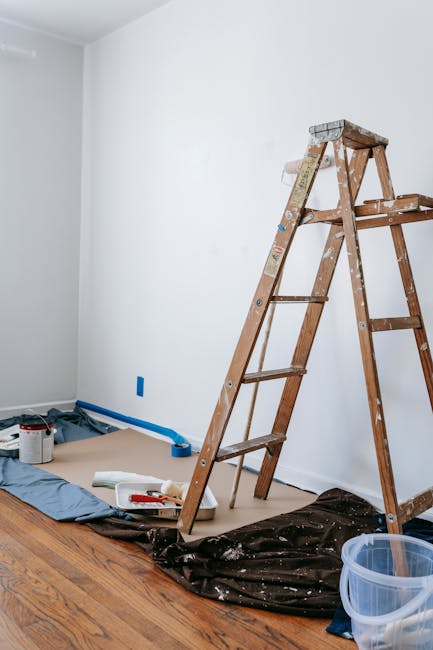Transform Your Space: A Beginner’s Guide to Painting
Have you ever walked into a room and felt like something was missing? Maybe it’s time to add a splash of color and transform your space with a fresh coat of paint! 🎨 Painting is one of the simplest and most cost-effective ways to breathe new life into any room. Whether you’re a novice or a seasoned DIY enthusiast, this guide will walk you through the basics of painting. Let’s get those brushes ready!
Table of Contents
1. Why Painting is the Perfect DIY Project
2. Choosing the Right Paint and Color 🎨
3. Prepping Your Space for Painting 🛠️
4. The Painting Process: Tips and Tricks
5. Cleaning Up and Final Touches ✨
6. Conclusion
7. FAQs
Why Painting is the Perfect DIY Project
Painting is an excellent DIY project for beginners because it’s straightforward, affordable, and highly rewarding. Unlike other home improvement tasks, painting requires minimal tools and can be completed in just a weekend. Plus, there’s nothing quite like the satisfaction of transforming your space with your own two hands!
Choosing the Right Paint and Color 🎨
The first step in your painting journey is selecting the right paint and color. Here’s what to consider:
• Type of Paint: Latex paints are a popular choice for interior walls due to their ease of use and quick drying time. For high-moisture areas like kitchens and bathrooms, consider using a mold-resistant paint.
• Color Choice: When picking a color, think about the mood you want to create. Lighter colors can make a space feel larger and more open, while darker hues add warmth and coziness. Don’t be afraid to experiment with bold colors for accent walls!
Prepping Your Space for Painting 🛠️
Preparation is key to a successful painting project. Follow these steps to get your space ready:
• Clear the Area: Move furniture away from walls and cover floors with drop cloths to protect them from paint splatters.
• Clean the Walls: Use a mild detergent and water to clean surfaces and remove dust, dirt, or grease. This will help the paint adhere better.
• Tape and Prime: Use painter’s tape to protect trim, ceiling edges, and windows. Apply primer if you’re painting over a dark color or on a new drywall.
The Painting Process: Tips and Tricks
Now that you’re prepped and ready, let’s dive into the painting process:
• Start with Cutting In: Use a brush to paint edges and corners, a technique known as “cutting in.” This ensures that rollers can cover the larger areas without missing spots.
• Roll with Ease: Use a roller for broad surfaces, making sure to overlap your strokes. Apply two coats for a smooth, even finish.
• Don’t Rush: Allow the first coat to dry completely before applying the second. Patience is key! ⏳
Cleaning Up and Final Touches ✨
Once the painting is done, it’s time to clean up and admire your work:
• Remove Tape Carefully: Wait for the paint to dry before removing the painter’s tape to avoid peeling.
• Clean Your Tools: Wash brushes and rollers with warm water and soap if you used latex paint. Proper cleaning extends the life of your tools.
• Enjoy Your New Space: Step back and enjoy the transformation. You’ve earned it! 🥳
Conclusion
Painting is a fantastic way to personalize your space and showcase your creativity. With the right preparation and techniques, even a beginner can achieve stunning results. So, grab your brushes and let your walls tell your story!
FAQs
1. How do I choose the right paint finish?
Consider the room’s function. Semi-gloss or gloss finishes are ideal for high-traffic areas like kitchens, while matte finishes work well in living rooms and bedrooms.
2. Do I need to use primer on all surfaces?
Not always. Primer is essential when painting over dark colors, raw wood, or new drywall. For lighter color changes, you may skip it.
3. How can I avoid streaks when painting?
Ensure even paint distribution on your roller, overlap your strokes, and maintain a wet edge to prevent streaks.
4. How long should I wait between coats?
Typically, wait about 2-4 hours between coats, but always check the paint manufacturer’s instructions for the best results.
5. What should I do if I spill paint?
Act quickly! Blot the spill with a damp cloth and clean with soap and water. Avoid rubbing, which can spread the paint.





